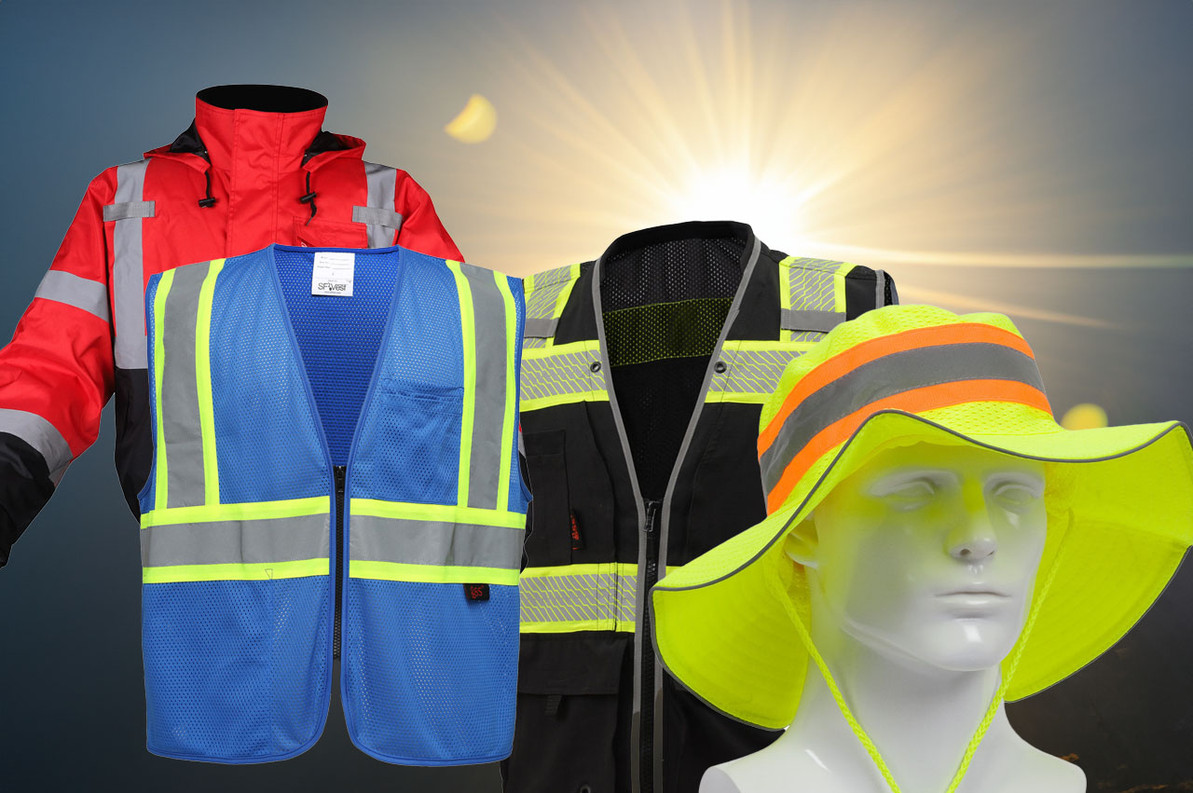Enhanced and Non-ANSI Visibility: Understanding the Distinction
Understanding the Distinction: Enhanced, Non-ANSI Visibility Apparel vs. ANSI Class 2 or ANSI Class 3 High Visibility Clothing
Introduction: In hazardous work environments where visibility is critical, protective clothing plays a vital role in ensuring the safety of workers. High visibility apparel, designed to enhance visibility and minimize accidents, has long been a staple in industries such as construction, roadwork, and emergency services. Two prominent categories of high visibility clothing are ANSI Class 2 and ANSI Class 3, which meet specific standards set by the American National Standards Institute (ANSI). However, a newer category has emerged: enhanced, non-ANSI visibility apparel. This article will explore the key differences between these two types of clothing, providing valuable insights for employers, employees, and safety professionals.
Understanding ANSI Class 2 and ANSI Class 3 High Visibility Clothing:
ANSI Class 2: This category of high visibility clothing is designed for workers exposed to moderate traffic conditions and requires a minimum amount of high-visibility material. It includes features such as reflective strips on the torso and shoulders.
ANSI Class 3: Suitable for workers who face high-risk environments with heavy traffic or complex backgrounds, ANSI Class 3 garments offer the highest level of visibility. They typically feature a significant amount of fluorescent and reflective material, including reflective strips on the torso, shoulders, and arms.
The Purpose of Enhanced, Non-ANSI Visibility Apparel: While ANSI Class 2 and ANSI Class 3 clothing are widely used and recognized, enhanced, non-ANSI visibility apparel serves a specific niche. These garments are designed to provide increased visibility and safety features beyond the ANSI standards but without adhering to the specific ANSI testing requirements.
Enhanced Visibility Features:
Increased Reflectivity: Enhanced, non-ANSI visibility apparel often features a greater amount of reflective material than ANSI-compliant clothing. This includes additional reflective strips, tapes, or piping, improving visibility from various angles.
Enhanced Color Options: Non-ANSI garments may offer a broader range of fluorescent colors beyond the traditional yellow or orange, allowing for more customization based on job requirements or company branding.
Innovative Designs: Enhanced visibility apparel often incorporates innovative design elements to improve visibility, such as segmented reflective material, strategically placed color blocks, or contrasting patterns that catch the eye.
Flexibility and Adaptability: One advantage of enhanced, non-ANSI visibility apparel is its flexibility in meeting diverse job requirements. These garments can be tailored to specific workplace needs, incorporating additional features like moisture-wicking properties, breathability, or durability, which may not be required for ANSI compliance.
Considerations and Limitations:
Regulatory Compliance: It's crucial to understand the specific safety standards and regulations in your industry and region. In some cases, ANSI Class 2 or Class 3 apparel may be mandatory or explicitly required by law.
Risk Assessments: Conducting thorough risk assessments is essential to determine the appropriate level of visibility apparel needed for the job. Factors such as traffic volume, weather conditions, and worksite complexity should be considered.
Employee Training: Regardless of the type of high visibility apparel used, employee training and adherence to safety protocols remain vital in ensuring their effectiveness and overall safety.
Conclusion:
While ANSI Class 2 and ANSI Class 3 high visibility clothing are the longstanding standards for ensuring worker safety, enhanced, non-ANSI visibility apparel provides an alternative for employers seeking additional visibility features beyond the ANSI requirements. These garments offer increased reflectivity, expanded color options, and innovative designs while maintaining flexibility to meet specific workplace needs. However, it's crucial to assess industry regulations, conduct risk assessments, and prioritize employee training to make informed decisions regarding the type of high visibility clothing to be used. Ultimately, the safety and well-being of workers.
Recent Posts
-
The Evolution of Safety Clothing, PPE, and Job Safety Standards
At Safety Smart Gear, the nation’s most trusted online store for protective apparel, we know t …Jun 16th 2025 -
Custom Safety Clothing Printing Options
Custom Safety Clothing Printing: Screen Printing & Heat Press Options When it comes to safety cl …May 13th 2025 -
Made In USA Safety Clothing
Benefits of Made in USA Safety Clothing Making Safe Choices with USA-Made Safety Clothing When …Apr 14th 2025




